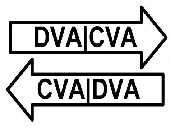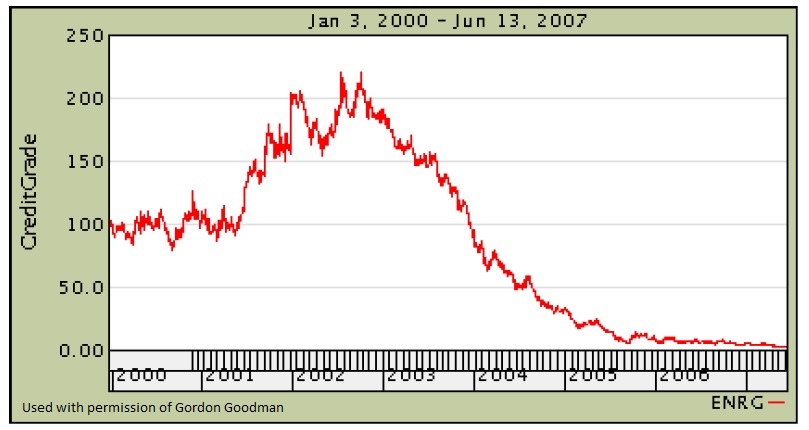How can financial risk be measured and managed in a volatile industry such as the energy sector? What are some of the common industry challenges?
Due to low commodity prices and technological changes in the industry, there are new dynamics in the handling of financial risk management in the energy sector. Three speakers addressed specific changes in a webinar sponsored by the Global Association of Risk Professionals on November 29, 2017.
“Sometimes the things we think we know, we don’t,” said Gordon Goodman of NRG Energy, the first of three speakers at the webinar. Goodman’s claim to fame is publication of a prescient article in July 2007 in which he warned about the coming “burst” of the credit bubble. He showed several CreditGrades historical charts that appeared during the run-up to the 2007 financial meltdown. Note the suspiciously low credit risk in the following chart; it was blind acceptance of this nearly-zero credit risk that helped create the bubble.
To describe the new dynamics in the energy sector, Goodman began with an overview of how the credit valuation adjustment (CVA) and debit valuation adjustment (DVA) became part of the accounting process.
He summarized a set of former Financial Accounting Standards (FAS) and Accounting Standards Update (ASU) regulations and related them to the new Accounting Standards Committee (ASC) codification numbers. The first on the list was the 1998 regulation that brought in mark-to-market in fair value calculations—just before the Enron debacle, and the most recent was the 2016 requirement that the DVA for certain non-derivatives be added not to Income, but to Other Comprehensive Income (OCI) in the financial statements.
“The CVA and DVA are very similar calculations,” he said. Both depend on guarantee valuation methodology. “The final values must be adjusted for collateral” as well as “by any guarantees that reduce the measured credit risk,” he noted.
Goodman advocates a unified approach to market risk and credit risk. “The goal is to be consistent, but not too consistent,” he said. There are “real differences in the in the quality of risks” that cannot be minimized. ª
Click here to read about the second panellist’s presentation.
Click here to read about the third panellist’s presentation.
Click here to view the CreditGrades case study article, and Goodman’s other GARP articles, at his campaign website. https://www.gordonforjustice.com/
Click here to view the 3-panellist, 50-minute GARP Webcast- New Dynamics in the Energy Sector: Best Practices for Managing Risk in a Volatile Business Environment


